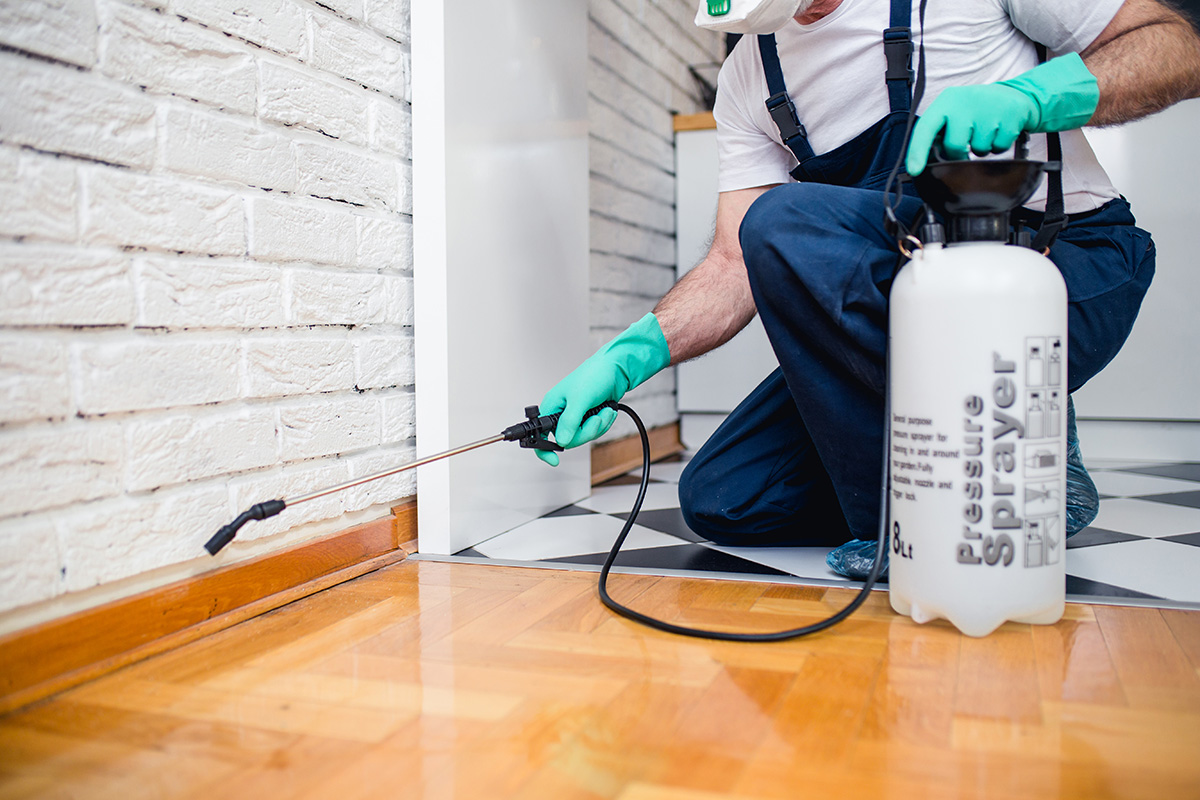Quality A1 Pest Control Services Charlotte - Safeguard Your Home
Quality A1 Pest Control Services Charlotte - Safeguard Your Home
Blog Article
Bed Pest Treatment Failure: Contrasting Chemical Vs. Non-Chemical Solutions
In the world of pest control, specifically when handling the consistent concern of bed insects, the option in between chemical and non-chemical treatment options can be a crucial one. Both techniques offer unique advantages and disadvantages, affecting variables such as effectiveness, safety and security considerations, and overall price. By examining the nuanced information of each method, a clearer understanding of which path to pursue in dealing with a bed bug infestation can be achieved.
Efficiency of Chemical Treatments
Chemical treatments for bed bug infestations have been extensively recognized for their rapid and potent efficiency in eradicating these pests. When considering the efficiency of chemical therapies, it is vital to comprehend that they can provide a comprehensive and fast solution to a bed insect issue. Expert pest control men frequently depend on pesticides to target bed insects at various stages of their life process, including nymphs, eggs, and adults. These chemicals typically function by interrupting the bed bugs' nerves, bring about paralysis and ultimate death.
Moreover, chemical therapies have the benefit of using recurring results, suggesting that they can remain to eliminate bed pests even after the first application. This residual activity is specifically beneficial in combating any kind of possible re-infestations. Furthermore, the rapid action of chemical therapies can bring relief to individuals facing serious bed pest infestations, enabling them to gain back control of their home promptly.
Safety And Security Concerns With Chemical Solutions
When using chemical options for bed bug therapy is guaranteeing the safety and security of occupants and the setting,One important aspect that calls for cautious consideration. While chemical therapies can be effective in eradicating bed insects, they might posture dangers if not dealt with correctly. One of the key safety and security worry about chemical remedies is the possible harm they can trigger to human health and wellness. Direct exposure to particular chemicals used in bed insect therapies can result in respiratory system issues, skin irritation, or various other damaging reactions, particularly in people with pre-existing conditions or sensitivities. Furthermore, improper application or dose of chemical pesticides can lead to toxic residues lingering in the cured area, posturing long-lasting wellness threats to residents.
Furthermore, the ecological effect of chemical remedies is an additional significant consideration. Some pesticides utilized in bed insect treatments may be harmful to helpful insects, wildlife, and ecosystems if they leach into the dirt or water supply. It is necessary to make use of chemical treatments sensibly, adhering to safety guidelines, and considering less hazardous alternatives to alleviate these dangers and make certain the safe and efficient monitoring of bed pest infestations.
Advantages of Non-Chemical Approaches
Considering the possible safety and security worries and environmental effect connected with chemical services for bed bug therapy, discovering non-chemical methods provides an appealing choice with numerous distinct benefits. Non-chemical treatments are eco pleasant, as they do not contribute to air or water contamination, making them a sustainable selection for bug control.
Furthermore, non-chemical options can be effective in targeting bed insects, including hard-to-reach areas where chemical treatments may not permeate - A1 charlotte pest control companies. Methods such as heat treatment, vacuuming, steam cleaning, and mattress encasements offer thorough removal without the use of unsafe chemicals.
Limitations of Non-Chemical Treatments

Additionally, non-chemical treatments usually require several applications to achieve successful removal. This can be time-consuming and pest control fumigation may not constantly guarantee complete removal of all bed pests and their eggs, particularly in surprise or hard-to-reach places.
Furthermore, the success of non-chemical therapies heavily relies upon appropriate application and thoroughness, which can be testing for people without professional proficiency. Insufficient application of non-chemical techniques may lead to insufficient obliteration, bring about relentless problems and the demand for added therapies.
Consequently, while non-chemical therapies have their benefits, it is crucial to recognize these limitations and consider them when figuring out one of the most reliable approach for managing bed bug invasions.
Expense Comparison: Chemical Vs. Non-Chemical Options
Offered the limitations connected with non-chemical therapies, a necessary aspect to assess in the context of bed pest monitoring is the price comparison between chemical and non-chemical alternatives. In contrast, non-chemical treatments like warmth treatment or vapor can be much more pricey, with expenses varying from $1,000 to $6,000 for an entire home. While the first cost of chemical treatments might seem reduced, multiple therapies may be called for to completely remove the invasion, possibly boosting the general expense.
Conclusion

Taking into consideration the prospective security concerns and environmental influence associated with chemical options for bed pest therapy, checking out non-chemical techniques offers a promising choice with a number of unique benefits.Provided the constraints associated with non-chemical treatments, a necessary go to my blog element to evaluate in the context of bed pest administration is the cost comparison between chemical and non-chemical choices. In comparison, non-chemical therapies like warmth treatment or steam can be a lot more expensive, with costs varying from $1,000 to $6,000 for an entire home. While the first cost of chemical therapies might seem lower, numerous treatments may be called for to completely eliminate the invasion, possibly boosting the general price.In verdict, when contrasting chemical and non-chemical bed insect treatment options, it is essential insect inspection service to consider effectiveness, safety and security, advantages, limitations, and expense.
Report this page